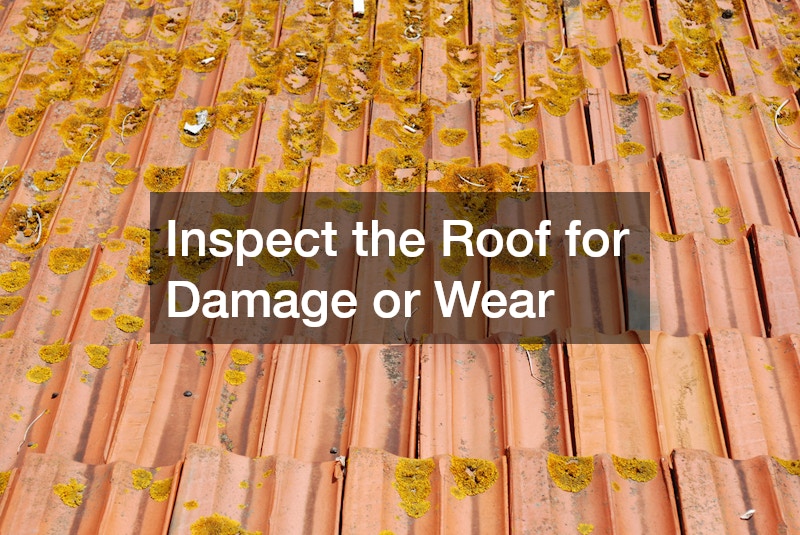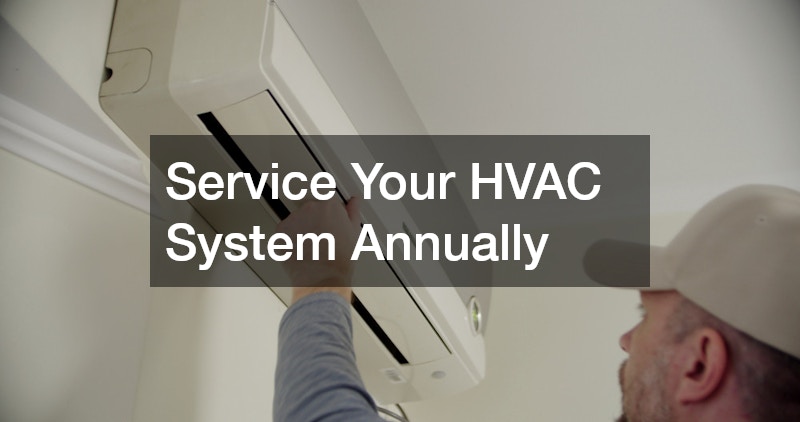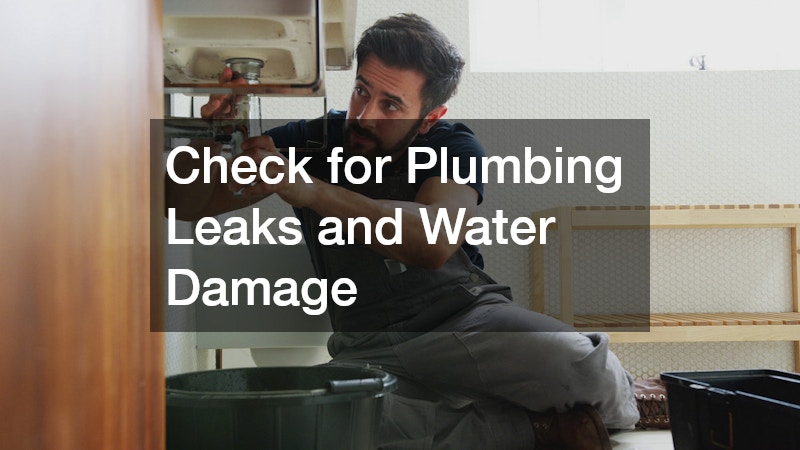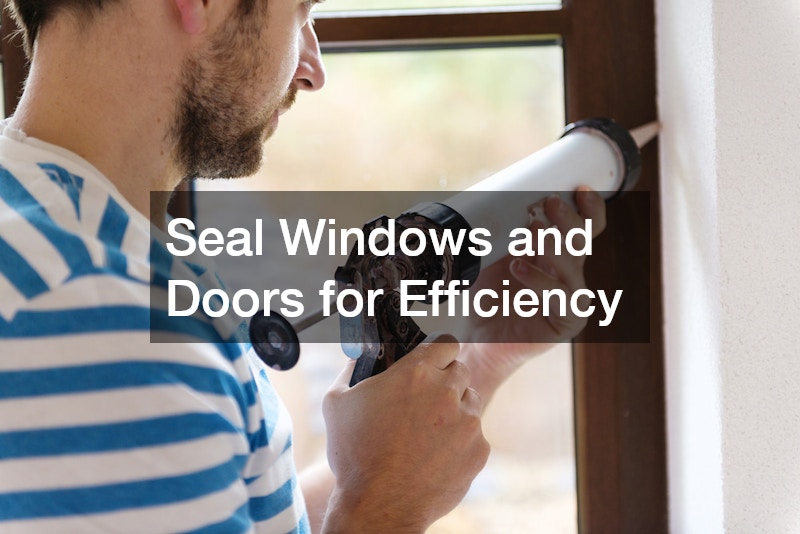Disclaimer: Benro Properties. This site provides home improvement content for informational purposes only.
Taking care of your home isn’t just about aesthetics or increasing property value—it’s also about protecting the safety and well-being of everyone inside. A house, like any complex system, needs consistent care to ensure all of its parts function properly. Over time, small issues can grow into serious problems if left unchecked. That’s where annual preventive maintenance becomes essential. When performed regularly, this proactive approach can help you spot potential hazards, extend the life of critical systems, and avoid costly repairs down the road.
Think of annual preventive maintenance as a yearly checkup for your home. Instead of reacting to emergencies like broken pipes or roof leaks, homeowners can plan ahead by systematically inspecting and maintaining key components of their property. This habit not only keeps things running smoothly but also fosters peace of mind. A well-maintained home is a safe home—one where you can feel confident your environment is protected from preventable damage year after year.
Many homeowners feel overwhelmed by the idea of maintaining every part of their property, but breaking it down into manageable, yearly tasks makes the process much more realistic. By committing to an annual preventive maintenance checklist, you can spread out responsibilities and reduce the likelihood of unexpected emergencies. This also allows you to budget more effectively, avoid high repair costs, and keep every part of your home in optimal condition. Whether you’re a new homeowner or have lived in your house for decades, taking a proactive approach helps you stay ahead of wear and tear while reinforcing long-term safety.
Inspect the Roof for Damage or Wear

The roof is one of the most important barriers between your home and the outside world. It protects against rain, snow, wind, and extreme temperatures, all of which can wear it down over time. That’s why checking your roof annually is a fundamental part of any preventive maintenance routine. Even if your roof looks fine from the ground, unseen problems like loose shingles, deteriorating flashing, or clogged valleys can lead to serious structural issues or water infiltration.
More specifically, if you’re noticing signs of wear such as curling shingles or dark streaks, it may be time to consider roof repairs before things worsen. Early detection of these problems during your yearly inspection allows you to fix them before they lead to interior water damage or mold growth. Hire a qualified roofing professional to perform a full inspection, particularly after storm season, and make any necessary repairs immediately. By incorporating your roof into your preventive maintenance schedule, you’re making a smart investment in your home’s long-term safety.
Clean and Maintain Gutters and Downspouts
Gutters and downspouts often go unnoticed—until they stop working. Their job is to channel rainwater safely away from your home’s foundation, siding, and landscaping. When leaves, twigs, and debris clog these systems, water can overflow and seep into areas it shouldn’t, leading to rot, erosion, or even basement flooding. Regular cleaning and inspection of your gutter system should be a non-negotiable part of your annual preventive maintenance checklist.
On a more detailed level, clogged gutters can directly contribute to roof leaking, especially when standing water backs up and begins to pool under shingles or freezes during colder months. An overflowing downspout can also cause water to settle around the foundation, weakening its integrity over time. Cleaning your gutters at least once a year—or more often in areas with heavy foliage—prevents these issues and ensures your home remains protected from moisture damage. Including gutter care in your preventive maintenance plan can save thousands in repairs and prevent extensive water damage throughout your home.
Service Your HVAC System Annually

Your home’s heating and cooling system plays a crucial role in maintaining indoor comfort and air quality year-round. However, many homeowners neglect their HVAC systems until something goes wrong. As part of your preventive maintenance routine, it’s essential to have your system inspected, cleaned, and serviced at least once per year. This helps ensure it operates efficiently, safely, and reliably—especially during peak heating and cooling seasons when you need it most.
More specifically, working with a qualified heating contractor can help identify worn parts, dirty filters, or ventilation issues before they escalate into expensive repairs or system failures. A technician can check for carbon monoxide leaks, inspect ductwork for blockages, and make sure your thermostat is functioning correctly. These services not only improve energy efficiency and reduce utility bills but also help prolong the life of your equipment. Prioritizing your HVAC system in your preventive maintenance schedule is one of the best ways to keep your home safe and comfortable.
Test Smoke and Carbon Monoxide Detectors
Safety should always be at the top of your home maintenance priorities, and nothing is more critical than ensuring your smoke and carbon monoxide detectors are fully operational. These devices provide early warnings that can save lives, but they’re only effective if they’re working properly. As part of your annual preventive maintenance, make it a habit to test each detector, replace the batteries, and confirm that every room has adequate coverage.
In homes with fuel-burning appliances like a water heater, the risk of carbon monoxide exposure increases significantly. This invisible, odorless gas can be fatal in high concentrations, making regular testing of detectors even more urgent. During your yearly checkup, also inspect the placement of your devices—detectors should be installed on every floor and near sleeping areas. Including this task in your annual preventive maintenance plan is a small effort with potentially life-saving results.
Check for Plumbing Leaks and Water Damage

Plumbing problems can often remain hidden until significant damage has occurred. From small drips under sinks to hidden pipe leaks inside walls, water issues have the potential to cause mold growth, structural damage, and costly repairs. Conducting a thorough inspection of your home’s plumbing system each year is a smart addition to your preventive maintenance strategy. Look for discoloration, musty smells, or soft spots on walls and floors that may indicate slow leaks.
Beyond the visible plumbing inside the home, don’t forget about your septic system. Scheduling routine septic pumping every few years, depending on usage, is essential to avoid backups and system failure. A professional can assess the tank’s condition and remove built-up solids that could lead to clogs or groundwater contamination. Including both interior and exterior plumbing components in your annual preventive maintenance checklist helps protect your home from the often devastating effects of water damage.
Examine Electrical Panels and Wiring
Your home’s electrical system is the backbone of nearly every modern convenience—from lighting and appliances to security systems and entertainment setups. Over time, however, wires can become frayed, connections can loosen, and panels may become outdated or overloaded. Including a full electrical inspection as part of your preventive maintenance routine helps ensure that everything is operating safely and efficiently. This is especially important in older homes, where wiring may not meet current safety standards.
Specifically, an overloaded circuit or faulty wiring can pose a serious fire hazard, particularly when high-energy appliances like HVAC units or AC repairs have been made without evaluating the system’s overall capacity. A qualified electrician can check your breaker panel for corrosion, test outlets for grounding issues, and ensure that any recent installations haven’t compromised electrical integrity. Addressing these problems as part of your preventive maintenance plan helps avoid dangerous surprises and keeps your home’s infrastructure in top shape.
Seal Windows and Doors for Efficiency

While windows and doors provide light, ventilation, and access, they can also be major sources of energy loss if not properly sealed. Gaps, cracks, and worn weatherstripping allow drafts to enter and conditioned air to escape, increasing your heating and cooling costs. As part of your annual preventive maintenance, it’s important to inspect these areas for wear and apply fresh caulking or seals as needed. This simple yet effective measure improves your home’s energy efficiency and overall comfort.
Remember to include large entry points, such as your overhead garage door, in this inspection. Poorly sealed garage doors can allow cold air, pests, and moisture into your home—especially if the garage is attached to living spaces. Check for light coming through the sides or bottom of the door and replace worn-out seals to maintain insulation. By making windows, doors, and even garages part of your annual preventive maintenance, you reduce utility costs and create a more secure, comfortable living environment.
Inspect the Foundation for Cracks or Shifts
Your home’s foundation supports the entire structure, making its condition critical to long-term safety. Soil movement, weather changes, and water exposure can all cause cracks, shifting, or settling over time. An essential step in your preventive maintenance process is to carefully inspect both the interior and exterior of your home for signs of foundation issues. Look for cracks in walls or ceilings, sticking doors and windows, or gaps along baseboards and floors.
If you notice visible exterior cracks or crumbling concrete, it’s wise to consult a professional specializing in masonry service to assess and repair the damage. Left untreated, foundation problems can lead to uneven floors, water intrusion, or even structural failure. Catching early signs through preventive maintenance can help you avoid far more invasive—and expensive—repairs later. Maintaining a strong foundation ensures your home remains a safe and stable place for years to come.
Trim Trees and Clear Outdoor Hazards
While most annual preventive maintenance tasks focus on your home’s interior or mechanical systems, your outdoor space deserves just as much attention. Overgrown trees, unstable branches, and cluttered yards can pose risks to your home’s safety—especially during storms or strong winds. Maintaining a clean and organized landscape not only boosts curb appeal but also reduces the chance of property damage and injury.
Take time each year to prune trees, remove dead limbs, and inspect areas around walkways, patios, or your brick driveway installation for trip hazards or root damage. A well-maintained driveway and tidy yard help prevent accidents and improve overall property value. Keeping your landscaping on the preventive maintenance schedule ensures that your outdoor areas are just as safe and functional as the rest of your home.
Review Safety Equipment and Emergency Plans
A safe home isn’t only about physical repairs—it also involves being prepared for emergencies. As part of your annual preventive maintenance, take time to review your household safety procedures and make sure all emergency equipment is in working order. This includes checking fire extinguishers, first aid kits, flashlights, and backup power sources. Conduct family drills if necessary, and make sure everyone knows where shutoff valves and emergency exits are located.
In addition to planning for events like fires or power outages, assess how your home would handle unexpected events like a major residential roof repair or storm damage. Having a list of trusted contractors, an updated insurance policy, and a stocked emergency kit can make a stressful situation far more manageable. Incorporating emergency readiness into your preventive maintenance helps ensure you’re not just reacting to problems—but actively prepared for them.
Protecting Your Home Starts with a Plan
Owning a home is one of life’s biggest investments, and taking care of it requires more than reacting to problems as they arise. Implementing a consistent annual preventive maintenance routine empowers you to catch small issues before they turn into costly disasters. From your roof to your foundation, and from indoor systems to outdoor spaces, every part of your home benefits from a little yearly attention. This proactive approach keeps your household safer, more efficient, and more resilient in the face of unexpected wear and tear.
More importantly, preventive maintenance isn’t just about fixing—it’s about preventing. By addressing everything from HVAC servicing and plumbing checks to gutter cleaning and safety planning, you create a home environment that stands the test of time. It’s not only about preserving property value, but also about protecting the people who live within it.
With the right plan and a bit of diligence, your home can remain a safe haven for many years to come. The peace of mind that comes with consistent care is invaluable. Knowing your systems are running smoothly, your structure is sound, and your safety measures are up to date allows you to enjoy your home with confidence.
